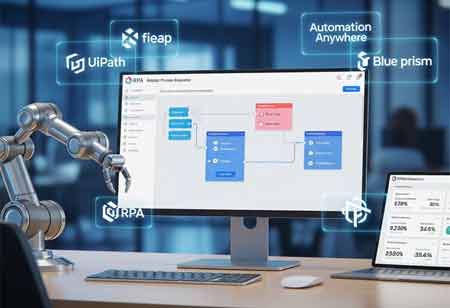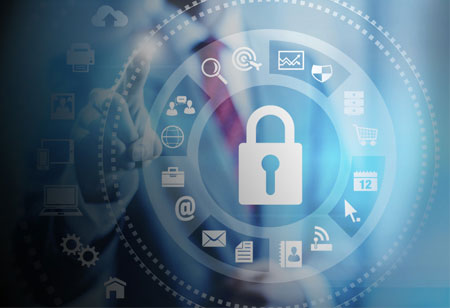THANK YOU FOR SUBSCRIBING
Enhancing Education's Inclusivity and Tailoring Learning through Technology
Technology has consistently played a crucial role in driving transformative changes within the field of education.

By
Apac CIOOutlook | Monday, August 28, 2023
Stay ahead of the industry with exclusive feature stories on the top companies, expert insights and the latest news delivered straight to your inbox. Subscribe today.
Technology is a key driver of educational change, from the printing press to online platforms. Education tech evolves with AI-driven personalised learning, blockchain-secured records, and immersive virtual learning.
FREMONT, CA: Technology has consistently played a crucial role in driving transformative changes within the field of education. From the introduction of the printing press to the rise of online learning platforms, the undeniable impact of technology on the learning process is evident. As society progresses, it becomes increasingly evident that emerging trends in educational technology continue to shape the educational landscape from diverse perspectives. This exposition explores the forthcoming and noteworthy trends in educational technology that are expected to exert a substantial influence on the realm of education.
Emerging Trends in Education Technology
The realm of educational technology is catalysing a transformative shift in the dynamics among students, educators, and entire educational institutions. In the years ahead, it is anticipated that the emergence of novel and powerful trends within the education technology landscape. These trends are positioned to nurture the creation of an enriched and effective learning ecosystem, highlighting the evolving nature of educational interactions.
Mobile Learning and Digital Content Platforms
The rise in popularity of e-learning coincided with the global onset of the COVID-19 pandemic. These platforms have garnered significant traction, affording students the chance to access high-quality educational content and instruction irrespective of geographical limitations. Furthermore, digital content platforms offer a wide array of educational resources, catering to the needs of both students and educators. With the continued upward trajectory of digital content platforms, their impact on learning methods and the interaction with educational materials is poised to undergo substantial expansion.
AI-powered Learning Environments
AI-driven tools, including facial recognition, natural language processing, and machine learning, are increasingly being integrated into educational environments. This incorporation is intended to streamline and enhance the learning process. Additionally, educational platforms powered by AI can provide students with personalised learning paths, while enabling educators to tailor lessons to meet the specific needs of individual students. As a result, it is justifiable to state that AI is rapidly becoming a fundamental element of educational resources, with its impact expected to have a significant resonance in the years to come.
Augmented Reality (AR) and Virtual Reality (VR)
The use of augmented reality and virtual reality holds the potential to create engaging and immersive educational experiences, regardless of the environment. These technologies are increasingly taking on roles as tools for experiential and interactive learning. They provide students with the chance to explore virtual environments, engage in hands-on exercises, and participate in customised simulations that address specific learning needs. As augmented reality and virtual reality gain wider acceptance, their impact on the field of education becomes more evident and substantial.
Gamification of Learning
The practice of integrating game-like elements into learning has become widespread in various educational institutions. This trend involves infusing educational contexts with design elements reminiscent of games. The primary goal of this integration is to enhance the learning process with increased enjoyment and engagement.
Examples of gamification within educational settings encompass a variety of features. These include the awarding of actual or virtual points upon task completion, as well as the implementation of virtual leaderboards to encourage friendly competition among peers. The transformation of learning into an interactive and captivating experience enables students to effectively absorb a greater amount of information while honing their skills enjoyably and interactively.
Wearable Technology
As wearable devices become more prevalent and adaptable, their impact within educational settings is set to experience significant growth. Wearable technology has the potential to track progress, provide performance feedback, and offer immediate personalised assistance, thereby making a substantial impact on learning environments. Furthermore, learners are engaging in activities such as listening to audio lectures, receiving classroom updates, recording voice memos, and utilising wearable technologies like integrated wristwatches and virtual reality headsets. This evolution is poised to improve the accessibility and effectiveness of the learning process, proving advantageous not only for students but also for educators and parents.
Automated Assessments
The substantial impact of automation in the field of education is unquestionable. The use of automated evaluation tools is on the cusp of experiencing a significant increase in assessing student progress. This trend allows educators and administrators to gain improved insights into student achievements and identify areas in need of improvement.
Automated assessment tools can provide analytical data, allowing students to identify their weaknesses and subsequently work on addressing them. Additionally, the implementation of automated grading mechanisms enables educators to efficiently and accurately evaluate assignments, reducing the time needed for this task.
Adaptive Learning
The realm of educational technology is currently experiencing the rise of a noteworthy emerging trend: adaptive learning. This trend is set to revolutionise conventional educational models by allowing courses to be customised based on the distinct needs of each student. Educational institutions are increasingly adopting this innovative data-driven approach to facilitate personalised learning journeys.
This advancement has the potential to equip educators with the means to effectively cater to a diverse range of student profiles and enhance the achievement of learning goals. Furthermore, it empowers teachers to tailor individual learning paths and the pace of learning, leading to a significant transformation in the field of education.
Cloud Computing
Cloud computing continues to play a crucial role in the realm of education, offering educators improved access and storage capabilities for data. Its benefits also reach students by allowing them to save on expensive textbooks through easy access to cloud-based educational resources from anywhere. As an emerging trend in educational technology, cloud computing provides strong authentication mechanisms to ensure data security. Moreover, it streamlines collaborative efforts between instructors and students, facilitating seamless interactions.
Social Media in Learning
The impact of social media on the learning process is visible, as it has created new opportunities for individuals to establish connections, access information, and share insights. This influence also affects educators, who have undergone transformative changes in their teaching methodologies due to the widespread reach of social media.
While the use of social media in education is still in its early stages, its effects on the learning environment are undeniable. Predictions suggest that in the coming years, the influence of social media on learning and teaching methods will endure and further develop.
Mobile Learning
The use of mobile devices as educational tools is increasing, providing students with the convenience of continuous learning regardless of their location. This trend has resulted in a growing adjustment of educational content for mobile learners. Traditional learning methods are being replaced by portable devices like smartphones and tablets, due to the ongoing and perpetual learning made possible by mobile e-learning solutions.
In the ongoing technological evolution, pivotal trends are emerging in educational technology. Personalised learning experiences, powered by AI and data analytics, address the diverse needs of students, leading to improved engagement and outcomes. Blockchain technology is positioned to seamlessly secure educational records while promoting the authenticity of credentials. Mixed reality and virtual/augmented platforms offer immersive and interactive learning environments, fundamentally changing remote and hands-on education. However, the successful integration of these trends requires careful adaptation, empowerment of educators, and equitable access to ensure the full realisation of technology's transformative potential in education.





